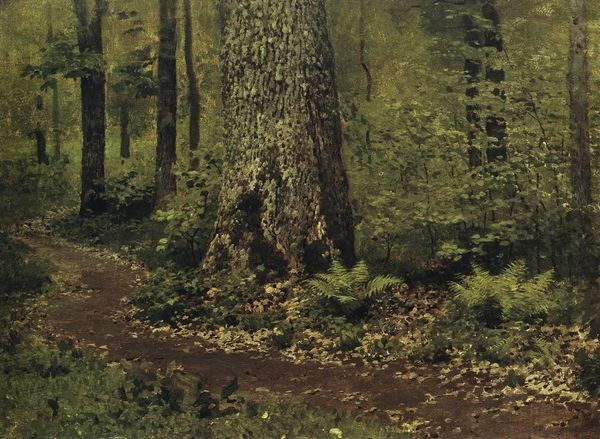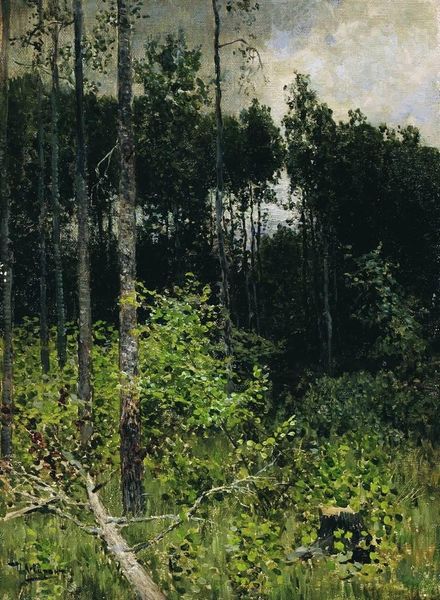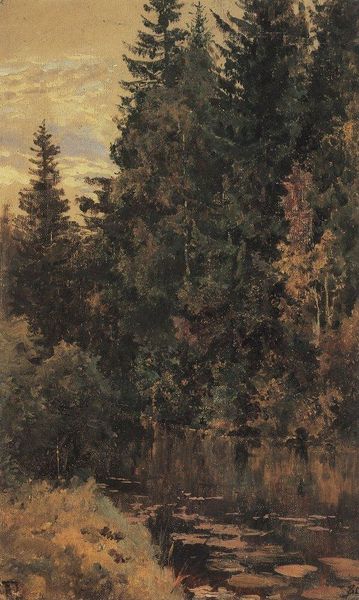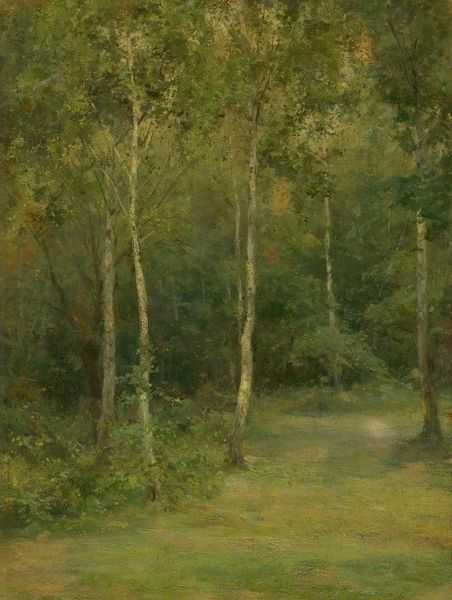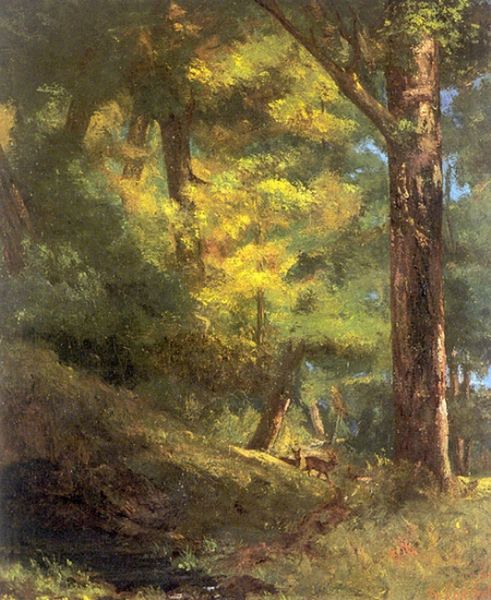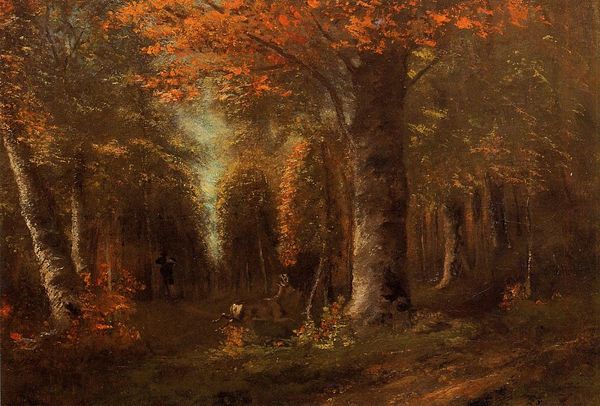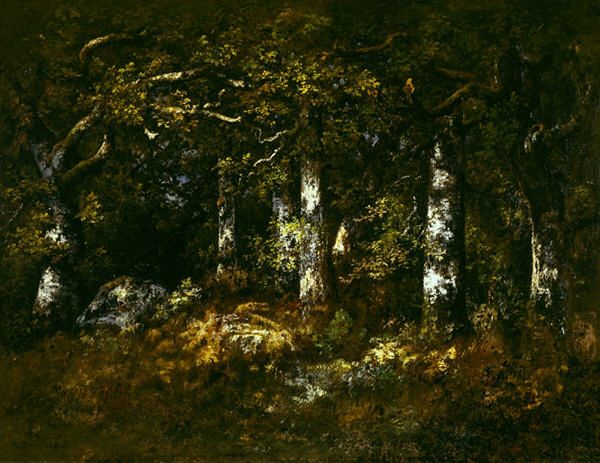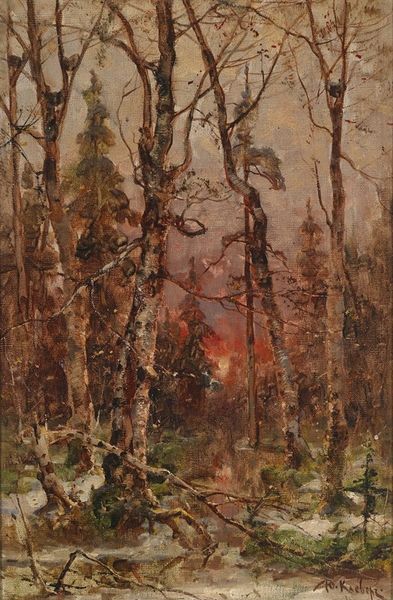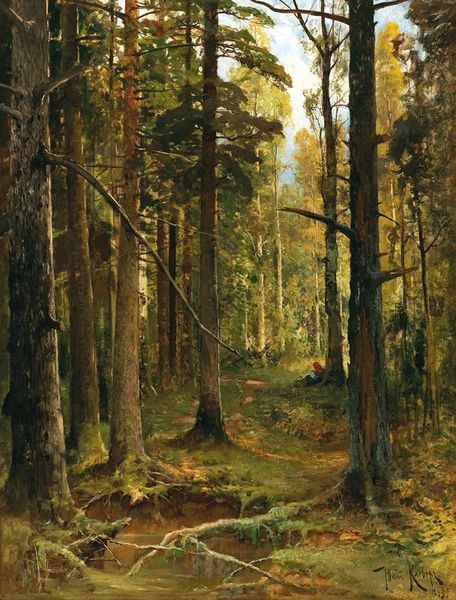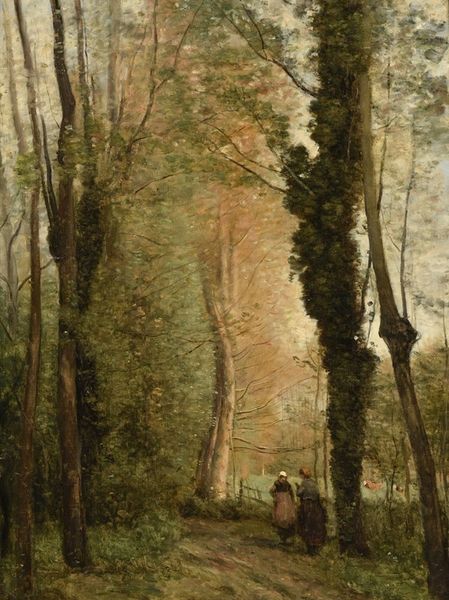
Copyright: Public Domain: Artvee
Editor: So, here we have Ladislav Mednyánszky’s "Study of Forest Interior," painted between 1890 and 1900. It's an oil painting done en plein-air. I’m struck by how the rough brushstrokes almost dissolve the scene, making the forest feel less like a physical place and more like…a state of mind. What do you see in this piece? Curator: I see a reflection of the societal anxieties of its time. Mednyánszky, living in a period of rapid industrialization, perhaps used the forest – a recurring motif – as a space of refuge, a space resisting the encroachment of modernity. But notice, even in this 'refuge', there's a sense of unease in the hurried, almost violent brushwork. Does that suggest a romantic idealization, or perhaps a critique? Editor: That’s interesting, I hadn’t considered the socio-political aspect. So, the rapid brushstrokes, instead of just being an Impressionistic technique, are expressive of this anxiety? Curator: Precisely. The 'natural' world has long been gendered female, contrasting the male, rational world of industry and commerce. However, this painterly violence enacted upon the canvas might symbolize not only the violation of nature itself, but, in an allegorical sense, of women’s roles as passive icons, subjected to an aggressively masculine gaze and control during this period. Do you think Mednyánszky provides the audience a critique through these compositional choices? Editor: That definitely shifts my perspective! It's not just a pretty landscape; it's actively engaging with the power dynamics of the time. Curator: Exactly! By placing this “Study of Forest Interior” within its historical and social context, we can expose how anxieties around the political issues, class and gender were not divorced from the artistic and visual field. Editor: I guess it goes to show that even seemingly simple landscape paintings can hold incredibly complex meanings. Curator: Indeed, and exploring those meanings is what makes art history so exciting!
Comments
No comments
Be the first to comment and join the conversation on the ultimate creative platform.

